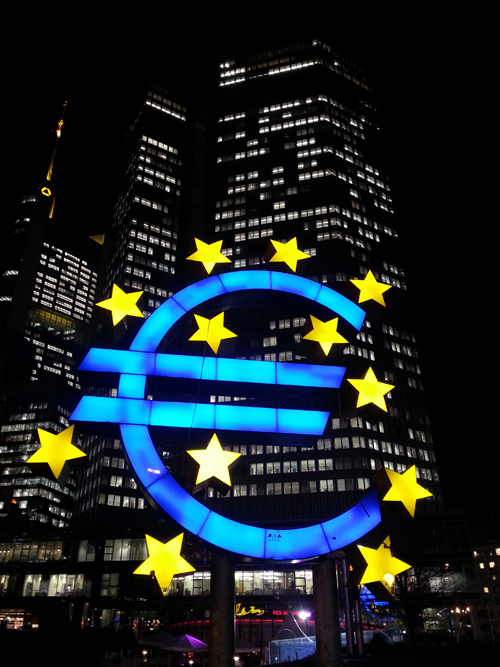Investing
Is Europe cured?

As the eurozone appears to receive some respite, Bill McQuaker of Henderson Global Investors, examines whether a permanent cure for its ills has been be found.
When Ben Bernanke suggested the end of quantitative easing (QE) was closer than investors had thought, markets wobbled. Soothing words from the US Federal Reserve chairman followed, markets rallied and it seems a hint of complacency has returned.
That has been a stroke of luck for European policymakers who need more time to tackle deep-rooted problems in the eurozone. Unfortunately for them, however, the window of opportunity may not last forever.
During May and June, weakness in China, rising 10-year US treasury yields on QE tapering speculation and a stronger dollar combined to hit emerging markets hard. European equity markets weakened and peripheral government bond yields soared – but, for the first time in years, Europe was not at the eye of the storm. This time the headlines were about someone else.
It is tempting to believe this reaction endorses the view of France’s President Hollande, who recently declared the eurozone debt crisis over. Unfortunately, a review of the facts suggests otherwise. Europe is in remission but a cure for its ills has yet to be found.
Growth
A Bloomberg consensus report shows that expectations for European growth have been on a downward trend since March 2011. The European Central Bank’s (ECB) latest GDP growth forecast for 2013 was revised down to a 0.6% contraction (at the start of the year, it was a slightly more positive 0.5% contraction).
Forward-looking indicators are slightly more encouraging but there is little to suggest the growth-inducing structural reforms advocated by the “troika”, comprising the International Monetary Fund (IMF), ECB and EU Commission, are having the hoped for effect of reviving growth.
This has been evidenced by a first quarter GDP contraction of 0.2% for the eurozone. Even the ‘core’ countries have shown signs of economic strain, with France contracting 0.2% and German growth very weak at 0.1%. In May, unemployment in the eurozone reached 12.1%, according to Eurostat, and business surveys by the European Commission expect it to rise further.
Debt
Lack of growth is making the debt dynamics of more than one peripheral economy precarious. These countries can cope for now because benign markets have made short-term funding easier and a shift into current account surplus has lessened peripheral countries’ dependence on foreign capital flows.
However, no nation has yet achieved a clear downtrend in its debt/GDP ratio – something the IMF usually insists on seeing before sounding the all-clear in a sovereign crisis.
Banks
The European banking system remains in a state of flux. Yet another review of capital adequacy and asset quality will not be complete until 2014 and, in the meantime, progress towards a banking union has slowed to a snail’s pace. While the official line is that a banking union remains on the agenda, it is by no means clear that every country wants to see it happen. Difficult issues, such as responsibility for legacy assets, have yet to be addressed.
Progress will almost certainly continue to be disappointing. The agonising negotiations over the Cypriot bail-out earlier this year highlights the point that investors should not become complacent about the risks within Europe’s banking system.
Politics
Meanwhile, doubts remain about Europe’s political health: while a coalition government was eventually formed in Italy, confidence in the government is being undermined by clashes between the pro-austerity centre-left Democratic Party and the pro-growth right-wing People of Freedom party.
In Portugal, President Cavaco Silva wants a cross-party agreement to support the country’s EU/IMF bailout and its conditions but the opposition wants an end to austerity. Meanwhile, in Greece, the three-party coalition remains fragile and a cabinet reshuffle was needed to restore some stability.
To date, no national electorate has chosen to vote into power a government determined to challenge the status quo. With support for the euro still widespread, that may continue. However, scandals, infighting and the electoral cycle all present opportunities for change.
Like terrorists, those who want to challenge the order of things need only be lucky once. Ultimately, politicians will be judged by voters (and the markets) by the extent to which reforms generate growth. The evidence is far from compelling at the moment, leaving open the possibility of a serious political challenge.
Key risk
We believe the key risk for Europe is that the rest of the world moves on and it remains stuck. Chronic but not acute, it is an area for investors to dip into from time to time.
What change in circumstances would encourage a change in tenor? Four possibilities spring to our mind: first, QE from the European Central Bank; second, debt write-offs for weaker countries; third, a new consensus regarding structural reform; and, fourth, a positive global growth shock.
Unfortunately, right now, none of these look especially likely.
Falling GDP growth forecasts
